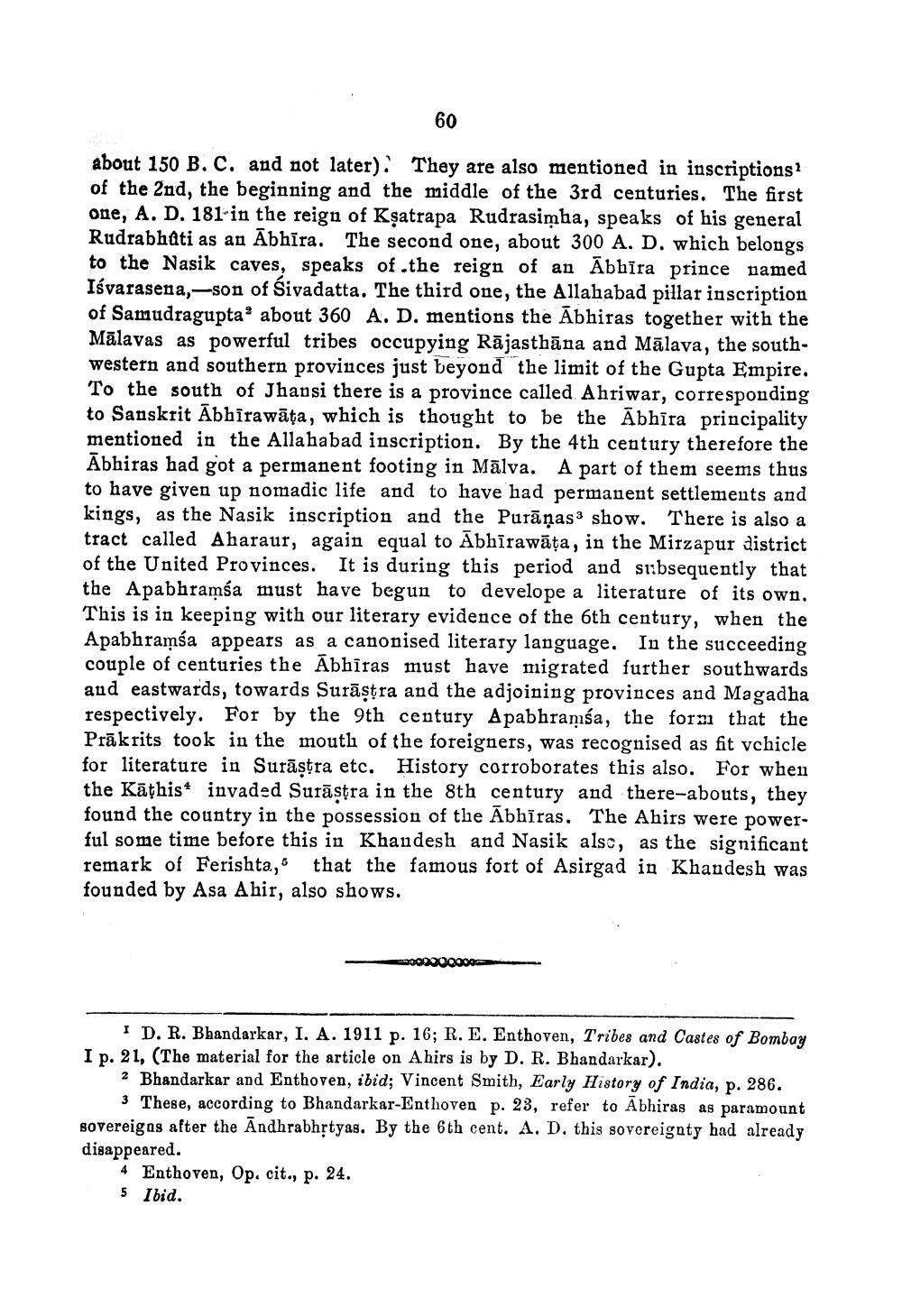________________
60
about 150 B. C. and not later). They are also mentioned in inscriptions1 of the 2nd, the beginning and the middle of the 3rd centuries. The first one, A. D. 181 in the reign of Kṣatrapa Rudrasimha, speaks of his general Rudrabhati as an Abhira. The second one, about 300 A. D. which belongs to the Nasik caves, speaks of .the reign of an Abhira prince named Iśvarasena, son of Sivadatta. The third one, the Allahabad pillar inscription of Samudragupta about 360 A. D. mentions the Abhiras together with the Mālavas as powerful tribes occupying Rajasthāna and Malava, the southwestern and southern provinces just beyond the limit of the Gupta Empire. To the south of Jhansi there is a province called Ahriwar, corresponding to Sanskrit Abhirawața, which is thought to be the Abhira principality mentioned in the Allahabad inscription. By the 4th century therefore the Abhiras had got a permanent footing in Malva. A part of them seems thus to have given up nomadic life and to have had permanent settlements and kings, as the Nasik inscription and the Purāņas show. There is also a tract called Aharaur, again equal to Abhirawaṭa, in the Mirzapur district of the United Provinces. It is during this period and subsequently that the Apabhramśa must have begun to develope a literature of its own. This is in keeping with our literary evidence of the 6th century, when the Apabhramsa appears as a canonised literary language. In the succeeding couple of centuries the Abhiras must have migrated further southwards and eastwards, towards Suraṣṭra and the adjoining provinces and Magadha respectively. For by the 9th century Apabhramsa, the form that the Prakrits took in the mouth of the foreigners, was recognised as fit vehicle for literature in Suraṣṭra etc. History corroborates this also. For when the Kaṭhis invaded Suraṣṭra in the 8th century and there-abouts, they found the country in the possession of the Abhīras. The Ahirs were powerful some time before this in Khandesh and Nasik also, as the significant remark of Ferishta," that the famous fort of Asirgad in Khandesh was founded by Asa Ahir, also shows.
I D. R. Bhandarkar, I. A. 1911 p. 16; R. E. Enthoven, Tribes and Castes of Bombay I p. 21, (The material for the article on Ahirs is by D. R. Bhandarkar).
2 Bhandarkar and Enthoven, ibid; Vincent Smith, Early History of India, p. 286.
3 These, according to Bhandarkar-Enthoven p. 23, refer to Abhiras as paramount sovereigns after the Andhrabhṛtyas. By the 6th cent. A. D. this sovereignty had already disappeared.
4 Enthoven, Op. cit., p. 24.
5 Ibid.




